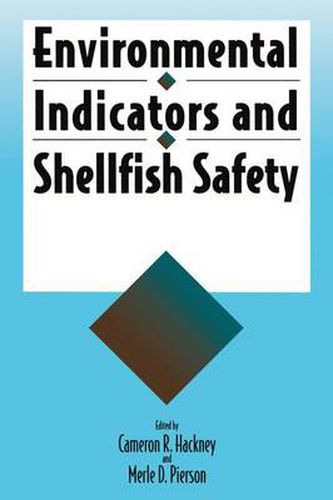Readings Newsletter
Become a Readings Member to make your shopping experience even easier.
Sign in or sign up for free!
You’re not far away from qualifying for FREE standard shipping within Australia
You’ve qualified for FREE standard shipping within Australia
The cart is loading…






The abundant shellfish populations of the rich brackish waters of the coastal areas have been an important source of food from prehistoric times. Productive shellfish-harvesting waters have been decreasing at an alarming rate in recent times. Currently, of the fifteen million acres of national estuarine waters available for shellfish harvesting, only 64% are classified as approved and the amount of acreage available is decreasing annUally. The remaining areas are classified as prohibited, conditionally approved or restricted. Despite the growing problems, the shellfish industry is of vital importance to the economy of many coastal areas. The safety of molluscan shellfish has been brought into question. The executive summary of the National Academy of Sciences, Institute of Medicine’s Report on Seafood Safety, states that available data from CDC and the Northeast Technical Services Unit (NETSU) of the Food and Drug Administration for 1978-87, as well as literature reports, suggest that the greatest number of seafood associated illnesses are from raw molluscan shellfish harvested in waters contami nated with raw or poorly treated human sewage. The majority of these illnesses have unknown etiologies suggestive of Norwalk or Norwalk-like agents that cause human viral gastroenteritis . In addition, there have been numerous reports on safety problems of raw molluscan shellfish. The safety of raw molluscan shellfish is determined by using environmental indicators of fecal pollution. With respect to shellfish, the indicator concept evolved early this century.
$9.00 standard shipping within Australia
FREE standard shipping within Australia for orders over $100.00
Express & International shipping calculated at checkout
The abundant shellfish populations of the rich brackish waters of the coastal areas have been an important source of food from prehistoric times. Productive shellfish-harvesting waters have been decreasing at an alarming rate in recent times. Currently, of the fifteen million acres of national estuarine waters available for shellfish harvesting, only 64% are classified as approved and the amount of acreage available is decreasing annUally. The remaining areas are classified as prohibited, conditionally approved or restricted. Despite the growing problems, the shellfish industry is of vital importance to the economy of many coastal areas. The safety of molluscan shellfish has been brought into question. The executive summary of the National Academy of Sciences, Institute of Medicine’s Report on Seafood Safety, states that available data from CDC and the Northeast Technical Services Unit (NETSU) of the Food and Drug Administration for 1978-87, as well as literature reports, suggest that the greatest number of seafood associated illnesses are from raw molluscan shellfish harvested in waters contami nated with raw or poorly treated human sewage. The majority of these illnesses have unknown etiologies suggestive of Norwalk or Norwalk-like agents that cause human viral gastroenteritis . In addition, there have been numerous reports on safety problems of raw molluscan shellfish. The safety of raw molluscan shellfish is determined by using environmental indicators of fecal pollution. With respect to shellfish, the indicator concept evolved early this century.